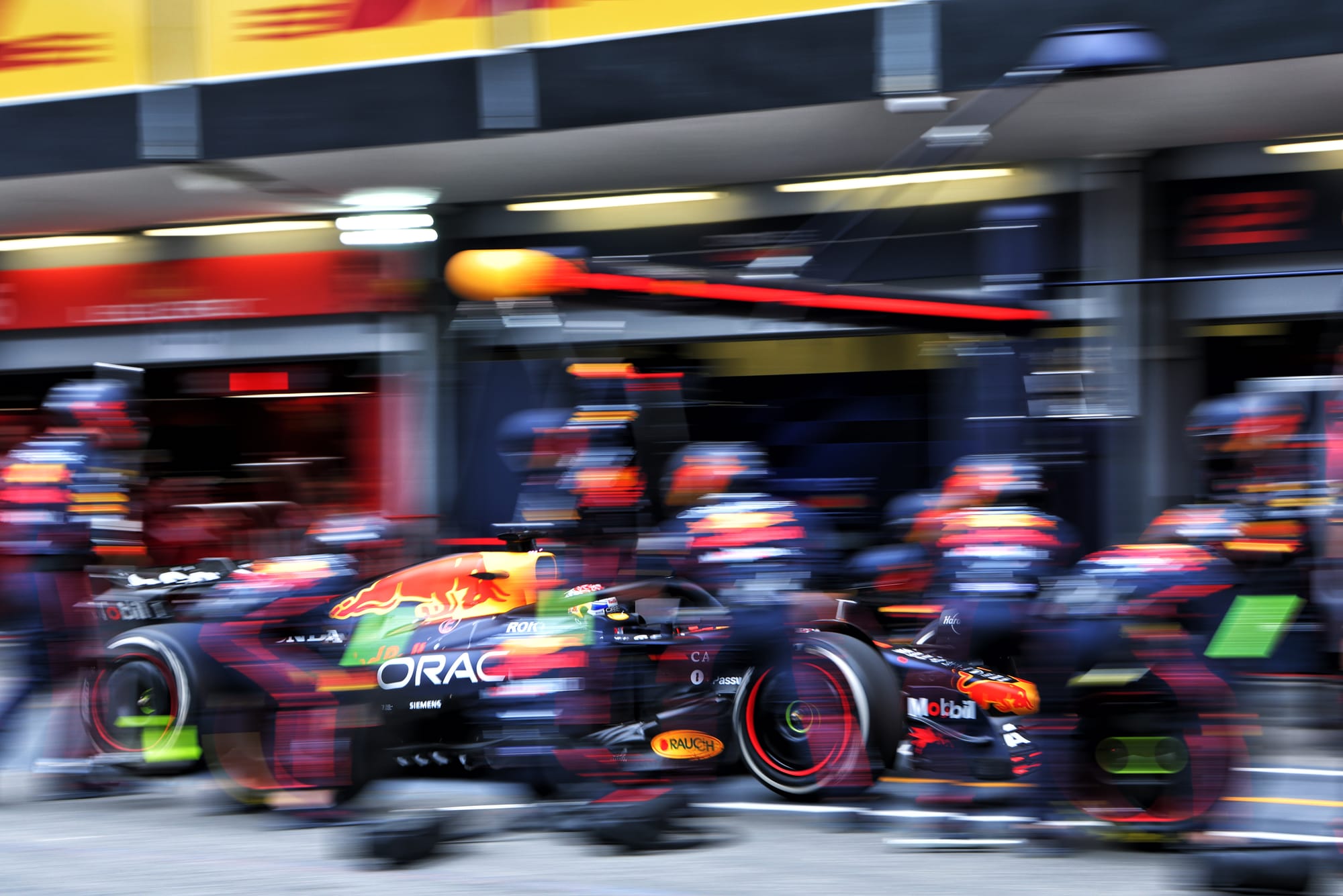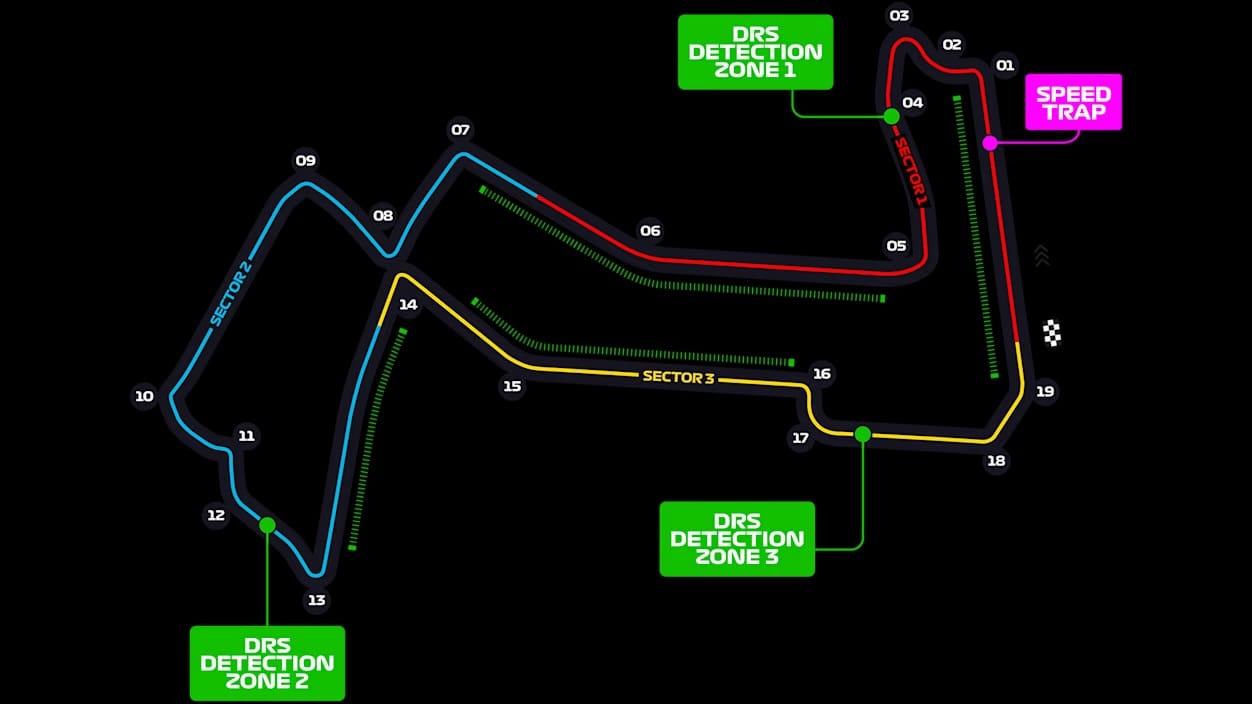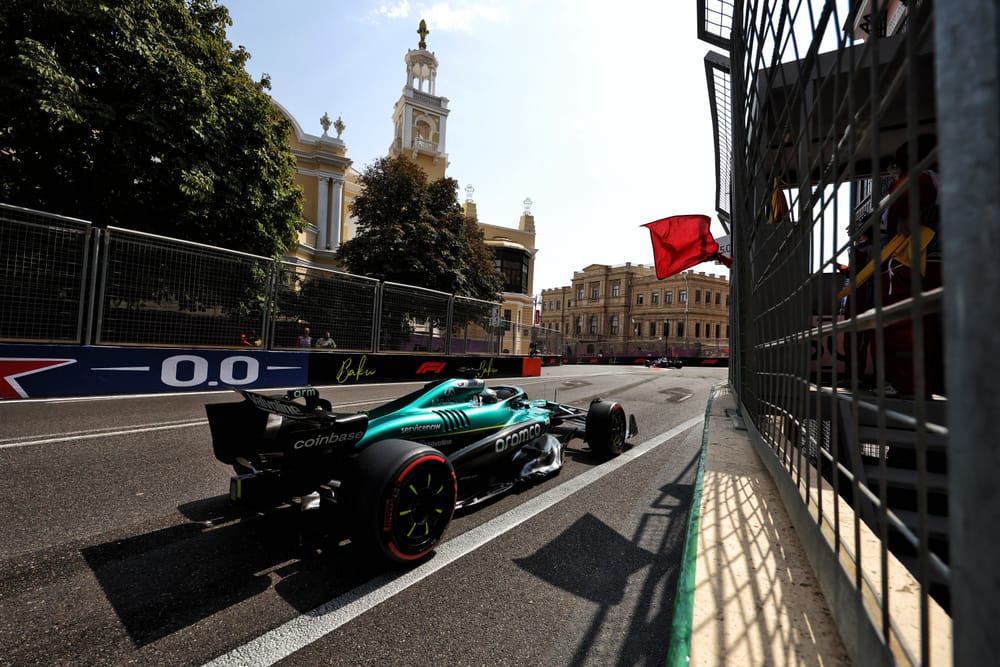It's always disappointing, not to mention unfair, when a Formula 1 driver gets caught out by a red flag through no fault of their own while whoever caused the stoppage doesn't suffer any disadvantage beyond that caused by their incident.
What happened during Azerbaijan Grand Prix qualifying, which featured a record six red flags, had many examples of these injustices. It wasn't an isolated case, either, and there's every chance we might see the same again in another ultra-tight street circuit qualifying session in Singapore this weekend.
Currently, the regulations for some flags require the driver to slow down, for others to slow down substantially and be prepared to stop, or stop the session immediately. For the yellows, there must be a specific number for the reduction, which is why I'm proposing using a specific percentage figure, the exact numbers for which could be fine-tuned to cover any situation.
The whole flag system used both in qualifying and the race needs a review, with the improved systems created from that then used in the free practice sessions so every team and driver is familiar with how it works rather than not knowing what happens next when there's either a small off or, more significantly, a big accident.
That means even in practice, you should have official lap deletions for track-limits violations (overrunning the white lines) to allow the teams, drivers and the FIA the chance to 'get their eye in'. So here's my set of rules.
The aim of these changes is to make sure that in particular when there are stoppages, every driver who can complete a lap is able to, rather than everyone missing out. And by more tightly governing how incidents of different severity are handled, it should be more clear what drivers can and cannot do and reduce the disruption to their runs.
- In the case of minor excursions beyond track limits, for example a driver going down an escape road with no car damage, this should be covered by a yellow flag deployed in the relevant mini-sector, so one post prior to the scene of the excursion and one post after. Between these two marshals' posts, drivers must slow down by a minimum of 10% relative to their speed through that complete section prior to that yellow flag situation. Drivers who have passed the last waved yellow may continue at full speed.
- For more significant excursions beyond track limits, for example a driver going down an escape road after sustaining car damage, this should be covered with a double waved yellow flag, also deployed one post prior to and one after the scene of the excursion. Between these two marshals' posts, drivers must slow down by a minimum of 20% relative to their speed through that complete section prior to that waved yellow flag situation. Drivers who have passed the last waved yellow may continue at full speed.
- For major excursions, with a driver going off the track into a runoff area or barrier and sustaining substantial car damage, this should be handled by a red flag/red lights from 200 metres after the finish line to the marshals’ post after the incident. Between 200 metres after the finish line, or as soon as the red is displayed, drivers must slow down by a minimum of 50% relative to their speed through that complete section prior to that waved red flag situation. For all cases, this speed reduction comparison would be measured every 10 metres. Drivers who are ahead of the last red flag or red light may continue at full speed and finish their lap to record a time. This is to reduce the risk of a driver losing a laptime in qualifying, which in turn means they are a set of tyres down through no fault of their own.
In the race, the VSC, full safety car and red flag all remain available. However, if a VSC is activated, it should be activated when the leader reaches the start line and move around the track as the leader goes through each post. Similarly, the safety car should wait at the pit exit to pick up the leader for a full safety car.

During this period, the pits should be closed until all cars have completed one full lap. If you were committed to the pits, for example in the pitlane, you may do your stop. This will reduce the gain of taking 'cheap' pitstops compared to those who have stopped under green flag conditions.
If there is a substantial incident, a full course red flag will be deployed with the positions going back one lap. If there's a red flag today, the positions at the moment of the stoppage are used but by having this reset it ensures that there's no disruption to the order caused by the incident.
Repairs can be made and you can change tyres but the rules should be modified to say that you can only fit the same tyre compound under a red flag situation or that you must make one tyre change at a pitstop during racing conditions. Currently, the rule states that each driver must use two different compounds during the race; this change would prevent completely free tyre changes when the race is stopped.

Using this map of the Marina Bay circuit in Singapore, where F1 races this weekend, illustrates the advantage of this change. A driver can finish their lap, even if there's an incident at Turn 1, as long as they were ahead of it. This change minimises the negative impact on drivers. Also, if required medical cars etc can get to the scene of the incident as they leave from the pits.
Hopefully, Singapore won't be a red-flag-fest in qualifying. But based on what we saw in Baku, don't hold your breath.



